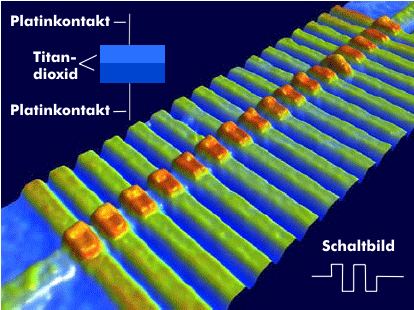memory resistor
The memristor, a combination of memory and resistor, is another passive electronic component, along with the resistor, capacitor and coil, that was predicted as early as 1971 by Berkeley professor Leon Chua. The memristor links electric charge with magnetic flux, and the resistance of the memristor depends on the electric charge that has flowed in a certain direction. The memristor remembers in which direction the electric charge has flowed.
In general, such an effect could be realized with active electronic components, but would have the disadvantage of energy supply, which is omitted in the passive memristor.
HP researchers first fabricated the memristor in 2008 by sandwiching two layers oftitanium dioxide( TiO2), which are only a few atoms thin and have a layer thickness of a few nanometers. The two TiO2 layers differ in that one layer has fewer oxygen atoms than the other. As a result, this TiO2 layer conducts better than the other. Depending on the applied voltage, the oxygen atoms shift and the resistance value of the arrangement changes.
Since other laws apply in this microworld, the memory effect of the memristor constructed in this way is much greater than that of other active components, such as transistors. The memristor is of interest as a memory device because of its high speed and durability, and because it stores data even when the supply voltage is switched off.

